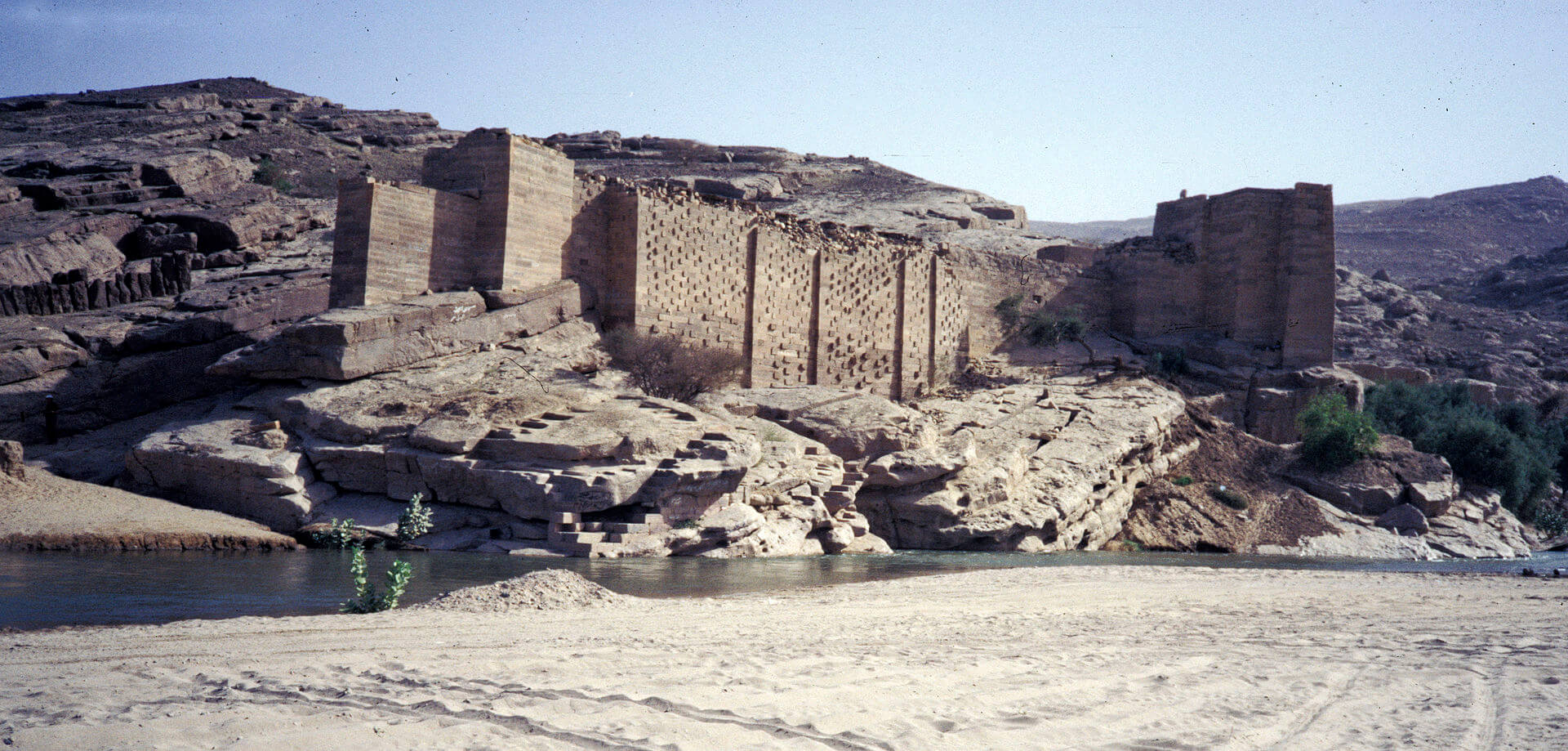SABAEANS, one of the three major peoples in the history of ancient South Arabia, the other two being the Minaeans and the Himyarites.
The Sabaeans (Arabic, Saba’) were the first South Arabian people to step within the threshold of civilization. They are the Sheba of the Old Testament (Gen. 10:7; 25:3) and the Sabai of the 8th century b. c. cuneiform inseriptions of Mesopotamia. The earliest Western reference to them occurs in Greek writings of the second half of the 3d century b. c. Their habitat was the southwestern corner of the Arabian peninsula, now called Yemen. The fertility of this rain-favored land, its proximity to the sea, and its strategic location on the route to India gave it decided advantages över Hejaz in the north, and made it the seat of a flourishing culture long before the rise of islam.
Until the last quarter of the 19th century, firsthand knowledge of this South Arabian civilization was fragmentary and meager. islam did not encourage the study of any pre-Islamic civilizations, and explorations were forbidden. A Danish seholar and traveler, Carsten Niebuhr, was the first to announce (1772) the existence of South Arabic inseriptions. A French Jew, Joseph Halevy, was the first European to penetrate inner Yemen (1869-1870). Disguised as a rabbi from Jerusalem seeking alms for the Jews, he brought back 685 inseriptions from 37 localities. He was followed by Eduard Glaser, whose explorations between 1882 and 1894 yielded sorne 2,000 inseriptions extending as far back as the 7th century b. c. The inseriptions are written in alphabetic characters, somewhat related to Phoenician, and reveal what the Sabaeans and other South Arabians had to say about themselves.
inseriptions, elassieal writings, and excavations, show that the South Arabians achieved a high degree of civilization and prosperity based upon agriculture and trade. Their religion was in essence a planetary astral system in which the cult of the moon god, known to the Sabaeans as Almaqah (health giving), prevailed. During at least the last millennium before Christ and two centuries after Christ, they almost monopolized the international trade of the Red Sea and the Indian Ocean, as well as the land trade that took frankincense, myrrh, spices, condiments, and other tropical produets through Arabia into the Mediterranean. Some of these produets came from India or East Africa. incense was highly prized for ritual use and for Egyptian mummification. In their heyday the Sabaeans had colonies or trading posts ali the way through North Arabia. The Queen of Sheba—if historical—must have come from one of these. She is named Bilqıs in Müslim tradition.

Ruins of the historical dam of the former Sabaean capital of Ma’rib, amidst the Sarawat Mountains of present-day Yemen (Source : wikipedia.org)
By the mid-8th century b. c., the Sabaeans had established a kingdom of their own with Marib as its capital. The kingdom lasted until about 115 b. c. In the first period, ending about 450 b. c., a priest-king, bearing the title Mukarrib Saba, stood at the head of the state. In the second period the ruler appears shorn of his priestly character and bearing the title Malik (king of) Saba.
Marib lies about 60 miles (100 km) east of Sana, the present capital of the Yemen Arab Republic, at an elevation of 3,900 feet (1,200 meters). It has been visited by few Westerners. its historical fame rests on its dam (sadd), a remarkable engineering feat intended to create an artificial reservoir between hills for irrigation. The older portions of the dam were constructed in the mid-7th century b. c. by Sumhualay Yanuf and his son Yathaamar Bayyin.
Arab historians ascribe the decay of South Arabian civilization to the “bursting of the great dam shortly before the rise of islam. In fact, the decay was due to a variety of economic and political causes, one of which was a shift in the trade routes.